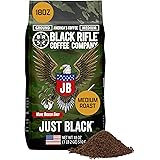Mastering Home Coffee Brewing: Advanced Techniques for Exceptional Flavor at Home
As eloquently demonstrated in the accompanying video by Sam Demelis, settling for subpar coffee is simply unnecessary when a world of exquisite flavor awaits discovery right in your own kitchen. Achieving truly great coffee at home involves more than just assembling equipment; it necessitates an understanding of foundational principles, meticulous technique, and an appreciation for the subtle nuances that elevate a simple brew into a memorable experience. This detailed guide expands upon the methods showcased, offering expert insights into optimizing your home coffee brewing practices for unparalleled taste.
1. The Non-Negotiable Foundation: Grind Consistency and Freshness
The journey to superior home coffee brewing invariably begins with the grind. It is often observed that pre-ground coffee, while convenient, rapidly loses its aromatic compounds and delicate flavors due to increased surface area exposure to oxygen. For optimal results, it is universally recommended that coffee beans be ground immediately prior to brewing; ideally, only a few days’ supply should be ground at any one time, certainly not a month’s worth, as this ensures peak freshness. Imagine if a chef were to pre-chop all herbs days in advance, the resulting dish would inevitably lack the vibrant essence expected.
Investing in a high-quality grinder is thus considered paramount for serious home baristas. While rudimentary nut or spice grinders might suffice in a pinch for certain applications, such as a very coarse French press grind, they typically produce an inconsistent particle size, leading to uneven extraction and a compromised flavor profile. A burr grinder, either conical or flat, is widely preferred, as it ensures uniform particle distribution, which is crucial for precise control over the brewing process and for unlocking the coffee’s full potential.
2. The French Press: A Classic for Rich, Full-Bodied Brews
The French press method, a timeless favorite, is prized for its ability to produce a remarkably rich and full-bodied cup of coffee. As detailed in the video, the grind size is a critical determinant for this method, with a coarse, almost cracked pepper-like consistency being ideal. This larger particle size prevents sediment from passing through the mesh filter and minimizes over-extraction, which can lead to unwanted bitterness. Pre-warming the glass carafe with hot kettle water is a subtle yet significant step often overlooked, as it prevents the brewing temperature from dropping prematurely, ensuring consistent extraction throughout the process.
A typical dosage of six to eight teaspoons of coarse-ground coffee is often employed for a standard French press. Once the hot water is added, an initial mixing is performed, which serves to fully saturate the grounds and initiate the critical extraction of oils and soluble compounds. This brief agitation ensures all coffee particles are uniformly engaged with the water. The brew is then allowed to steep for approximately three to five minutes. Upon completion, the plunger is gently and slowly depressed to separate the grounds from the liquid. This gentle action is imperative to avoid disturbing the coffee bed and introducing fine particulates into the finished brew. The visible “crema” that forms on the surface, often regarded as the true essence of coffee, is actively sought after in this method, as its presence is often associated with a sweeter, more balanced flavor profile, mitigating potential bitterness.
3. The Pour-Over Method: Cultivating Purity and Clarity
For those who prioritize a clean, bright, and nuanced cup, the pour-over method, exemplified by devices like the Hario V60 filter, is frequently selected. This technique is distinguished by its meticulous control over water flow and temperature, which collectively contribute to an exceptionally pure coffee experience. A medium-coarse grind, akin to raw sugar, is typically specified for pour-over, striking a balance between efficient extraction and avoiding clogging of the filter.
Initially, the filter paper must be thoroughly wetted with hot water; this step not only removes any papery taste but also pre-heats the brewing apparatus, ensuring temperature stability. After the coffee grounds are added, a slight depression is often created in the center to guide the initial water application. A slow, controlled pour, using a gooseneck kettle, is then initiated, first to “bloom” the coffee. This involves gently wetting the entire surface of the grounds and allowing them to degas, a process where trapped CO2 is released. Subsequently, water is systematically poured in concentric circles, ensuring all coffee particles are evenly saturated. This step-by-step approach, while requiring patience and precision, ultimately yields a brew renowned for its clarity of flavor and aromatic complexity, often described as “liquid gold” due to its pristine quality.
4. The Moka Pot: Italian Espresso-Style Potency
The iconic Moka pot offers a robust, espresso-like coffee, brewed under pressure through a unique percolation process. A medium-fine grind, finer than pour-over but coarser than true espresso, is typically specified, allowing for efficient extraction without excessively hindering water flow. The lower chamber is filled with water just below the safety vent, ensuring proper steam generation. Coffee grounds are then added to the filter basket, forming a slight mound above the brim without compaction; the natural action of gravity is relied upon to settle the coffee bed, as over-packing can lead to increased bitterness and a restricted flow.
Heat application is a crucial element in Moka pot brewing. It is often recommended that the pot be placed on a stove burner where the flame does not extend beyond the perimeter of the base, preventing scorching and potential off-flavors. Brewing typically takes between three to five minutes. Careful monitoring is advised; as the coffee begins to percolate into the upper chamber, indicated by a steady stream, the heat source should be immediately removed. If a loud gurgling sound is produced, this signals that the water is depleting, and the coffee is over-extracting, leading to an undesirably bitter taste. Swift removal of the base, often with the aid of towels, is performed to halt the cooking process and preserve the integrity of the brew, preventing further undesirable bitterness.
5. The Ibrik (Turkish Coffee): A Timeless Ritual of Concentration
Perhaps the most personal and historically rich of the methods discussed, the Ibrik, or Turkish coffee, represents a brewing ritual steeped in tradition and family heritage, as profoundly shared by Sam Demelis. This method demands an exceptionally fine grind, so fine that it is often compared to flour, emphasizing the meticulous preparation involved. Conventionally, one small cup of water per serving is measured into the Ibrik, followed by a heaped teaspoon of this super-fine coffee per cup. Sugar, if desired, is also incorporated at this initial stage.
The concoction is then slowly heated, ideally on a bed of hot sand in traditional settings, or over a very low flame on a stovetop. Crucially, the coffee and sugar are thoroughly dissolved and swirled, sometimes even for a specific number of rotations (such as 27 times, if one follows a personal birthday tradition as mentioned). The brewing process must be executed with extreme patience, ensuring the flame is kept as low as possible without extinguishing. The objective is to bring the coffee to the cusp of boiling, observing the perimeter where the ‘crema’ begins to “close in.” It is at this critical juncture, just before a full boil is reached, that the Ibrik is removed from the heat. Boiling the coffee would destroy the precious crema and fundamentally alter the flavor, rendering it undrinkable in this style. The resulting brew is intensely concentrated, laden with aromatics, and served directly into small cups, with the rich crema carefully distributed amongst all servings as a symbol of hospitality and connection.
6. Elevating Your Brew: Beyond the Basic Methods
Beyond the core techniques of French press, pour-over, Moka pot, and Ibrik, several ancillary factors critically influence the quality of your home coffee brewing. For instance, the mineral content of water can dramatically affect extraction and flavor; filtered water, free from chlorine and excessive hardness, is widely considered superior. Imagine if a baker were to use impure water in their dough; the final product would surely suffer. Similarly, storage of coffee beans in an airtight, opaque container, away from light, heat, and moisture, is essential for preserving their volatile compounds.
The type of coffee bean itself, encompassing varietals, origin, and roast level, also plays a pivotal role. A light roast might highlight delicate floral and fruity notes, ideally suited for pour-over, whereas a darker roast could yield a more robust and bitter profile, perhaps favored in a Moka pot. Experimentation with different bean profiles, coupled with precise grind adjustments and controlled brewing parameters, allows for a truly personalized and refined experience. Through diligent practice and an acute awareness of these variables, the ambition of mastering home coffee brewing is not merely attainable but becomes an endlessly rewarding pursuit, ensuring every cup is nothing short of exceptional.







